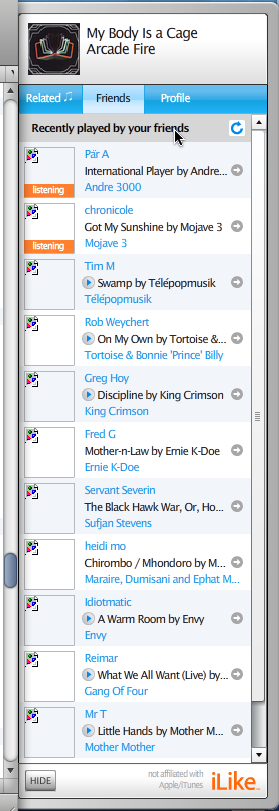It is an internet connectivity trifecta:
- The phone company configured your DSL line wrong.
- The new DSL modem supplied by your ISP was a dud.
Your brand-new Airport Extreme wireless router does not work. It’s under warranty, but to get it replaced, you must endure another hour-long session with Apple technical support. You’d rather chew off your own leg. (Update.)
It’s really a fourfecta. The phone company fixed the DSL line, but didn’t tell the ISP. They didn’t even tell their own service technician. Dude showed up to fix a line that wasn’t broken. You wonder what the guys in his Anger Management class had to say about it.
Two and half weeks into the void, a light bulb moment: Maybe it’s the modem. ISP sends new modem, you get your speed bump.
But only when you plug directly into the modem. For your new Airport Extreme wireless router cannot find an IP address even when you enter it manually. Indeed, this remarkably attractive piece of technology cannot be configured in any meaningful way. It cannot even restart without hurting itself.
You read that the new Airport Extreme works great. Alas, there was one lemon in the production line. You got the lemon. Trifecta.
Two faces
You tell PC users you bought an Airport Extreme because it was time for a new router, and Apple computers work best with Apple routers. Besides, Apple has that whole 802.11n thing going. That 802.11n is just so much better than the outdated spec they’re using. They just wouldn’t understand.
You tell Mac users you bought an Airport Extreme to replace a perfectly good third-party router, because OS X 10.4.x is semi-incompatible with third-party routers. All too frequently, one of your OS X 10.4.x Macs becomes unable to find a wireless signal sent by your ancient Linksys router.
You didn’t have to buy the Airport Extreme router. You could fix the compatibility issue by adjusting a setting on the old router. To do so, go to Fresh Kills, dig your old G4 tower out of the landfill, boot into Virtual PC, and log into the old router.
Can’t find the old G4 tower in the landfill? Buy an Airport Extreme. Apple makes it. Their stuff just works.
Support
The Lithium Woman in Apple Technical Support was unable to suggest anything beyond restarting the hardware and sticking a pin in the Reset hole—things you tried many times before breaking down and calling Apple. Why this tech support call took an hour is a mystery. Why it is called “support” is a more profound one.
At the start of the call, you said all you needed was help accessing the Manual Configuration panel to type in the WAN I.P. address, because for some reason the Manual Configuration Panel would not load. But the Lithium Woman made you plug stuff in and unplug stuff and turn stuff on and off for an hour. It was the stuff you’d already done, and you explained that, but that’s how tech support works, so you did it.
At the end of the hour, having sufficiently atoned for your sins, you again asked for help accessing the Manual Configuration Panel, as you needed to type in the WAN I.P. address, and the Manual Configuration Panel just wouldn’t load.
The Lithium Woman said you shouldn’t have to type in an I.P. address.
Impasse.
After a while, feeling bad for her, you offered her a face-saving way of ending the call without having helped you.
You figured, once your new DSL network was set up, your Airport Extreme router would just work.
But let us pause
Most readers stopped after the first paragraph. A few hardy souls made it all the way here. Thanks for sharing the journey.
Die-hards will want to suggest solutions. For them, a few details.
Automatic setup and manual configuration both end in “please try again” error messages.
The router freezes and crashes without ever connecting, suggesting that the problem is software based. We’ve wiped Airport Utility off the hard drive with App Zapper, removed preferences, reinstalled from disk, and run Software Update to download and install the latest version. That kind of reinstall usually does the trick. Not this time.
Resetting the device with a straightened paper clip is the only thing that briefly lets you access Manual Setup. You enter the IP Address, Subnet Mask, Gateway (Router), and DNS Servers. You verify the data. The device restarts itself. You bite your nails. The software congratulates you. You open a browser. You are not online. And you can no longer access or change settings. Unless you restart the device with a straightened paper clip.
Nothing works. You are the proud owner of a piece of modern art. The object is beautiful, but it has no heart. There is no network, no nothing. George and Martha. Sad, sad.
